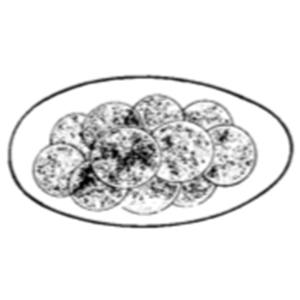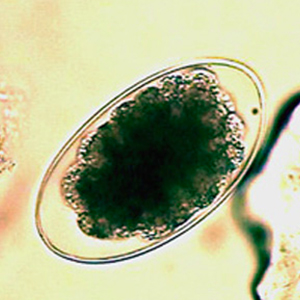Trichostrongyles are nematodes which can affect non-human primates. The two genera of interest are Molineus and Nochtia (the only described species to affect non-human primates being Nochtia nochti).
Epidemiology
Molineus spp. have been reported in Africa, and Central and South America, whereas Nochtia nochti has been described in Asia. Molineus spp. affect mainly Prosimians and New World Monkeys (Cogswell, 2007) whereas Nochtia nochti is a parasite of Old-World Monkeys (Cogswell, 2007; Strait et al., 2012).
Description
Trichostrongyle eggs have a typical non-embryonated strongyle egg morphology: they are oval, with a thick outer membrane, a morula and non-parallel lateral sides. They also have characteristics specific to trichostrongyle eggs with one of their sides being thinner and containing a dense morula of 16 to 32 blastomeres (Cogswell, 2007).
Differential diagnosis
Differential diagnosis includes any non-embryonated strongyle egg.
Clinical significance
While Molineus infections may cause hemorrhagic enteritis and chronic pancreatitis (Bacalhao et al., 2016), Notchia notchi contamination is normally asymptomatic in non-human primates (Strait et al., 2012). Moreover, zoonotic potential for this group of parasites has not yet been reported (Cogswell, 2007).
Prophylaxis and treatment
No specific treatment for trichostrongyle infections has yet been described in non-human primates. Hygiene measures seem to be sufficient to contain infections.




